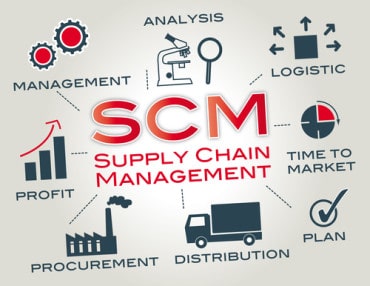
With SONiC, organizations can extend their data center fabric out to edge locations, using a single unified network operating system and the same familiar data center networking tools that they are accustomed to.
Edge computing holds promise to change the way businesses deploy applications, use data-driven insights, improve operations, enhance customer experiences, and more. Unfortunately, many organizations find their edge efforts lead to highly siloed applications and environments that are hard to manage and inhibit innovation. Increasingly, the way to address these issues is to use SONiC, an open-source networking operating system that lets organizations use the same network tools from the edge to the data center to the cloud.

RTInsights recently sat down with Paul Koteras, Product Marketing Consultant, and C.K. Kumar, Director, Edge Solutions Marketing, both of Dell Technologies, to talk about edge issues, how open-source SONiC can help, and why organizations can gain additional benefits like enterprise-class capabilities and support by teaming with a technology leader. Here is a summary of our conversation.
RTInsights: When it comes to edge, many companies are turning to open-source solutions for networking and connectivity. What are the benefits of using such solutions?
Koteras: When you look at how IT has changed just in recent years, open-source networking is really the next evolution of the modern IT environment. With everything being very highly distributed and becoming more complex, the speed of business is exerting a lot of pressure on the network to be more flexible and to allow easy scaling. Organizations are looking for ways to achieve that secure, reliable connectivity but also drive operational efficiency so they can really continue to grow and thrive with their business. What you get with open source is, of course, no vendor lock-in, and that’s a huge advantage. Organizations are no longer being constrained by that single-vendor approach. The reason that is important is that oftentimes the single-vendor approach may technically meet all the needs but can result in bloated or unneeded features.
Open source is extensible. So, new technologies and features can be implemented at a faster pace than you’ll find in most proprietary or closed source-type solutions. And open source is more pliable. Legacy solutions tend to implement new features when there’s a market for them. Or when there’s a mass need for those features. With open source, though, if you want to be on the forefront, or if you want to get creative with your architecture, it is possible to move to a more focused approach and development because you’re not specifically limited to the features for the masses. You can look at new architectures and new features within open source and build the solution that fits your needs. It’s also typically platform-agnostic and provides the capability to operate with a range of automation and orchestration tools. Specifically, Enterprise SONiC Distribution by Dell Technologies includes programmatic interfaces like REST and gNMI that allow integrations with common toolsets and applications like Ansible, Apstra, Augtera, and Dorado.
RTInsights: What issues should they be aware of when taking this approach?
Koteras: First and foremost, you want to know where the code is coming from. Who’s maintaining that code? Is it reputable? In the case of SONiC, the source code was provided by Microsoft, and it was released as an open-source project under OCP [the Open Compute Project] in 2016. The SONiC OS originated as a hyperscale-level NOS [network operating system] and is already in production on 45,000 Azure switches. So, it has a very solid background behind it. Currently, it has the backing of many major players, including Microsoft, Alibaba, Broadcom, Dell Technologies, Google, Intel, NVIDIA, and numerous other partners, and the SONiC community recently moved under the umbrella of the Linux Foundation, providing a wealth of open-source expertise and organizational support, opening it up to a much larger ecosystem of open-source partners and projects and allowing for integration with other Linux Foundation projects.
Another key aspect one should be aware of with open source is the support model. With open source, you’re typically either relying on the community for support or developing support in-house. That may not be practical for a lot of enterprise production environments. If you don’t have an army of engineers to design and support open-source software in-house, you’re going to need that enterprise-level support somewhere along the way.
Finally, how do you influence the roadmap of feature enhancements? If you don’t have the capability or resources to develop them in-house, how do you get the features that are important to you into the roadmap?
RTInsights: We’ve seen this in other open-source areas. What are the advantages, in general, of teaming with a technology partner when implementing open-source solutions?
Koteras: There is a high degree of programmability and flexibility with open-source software, but it can lack the resources and expertise needed for things like implementation, professional services, critical level support, and interoperability. Having an invested technology partner can help provide those organizations with the level of control and programmability they desire, packaged with the support and reliability needed for a high-performance production environment.
For example, Dell has a reputation for making complicated software easy, and we do the same thing with open source solutions. Dell takes SONiC, adds the capabilities and features that make it suitable for an Enterprise environment, makes deployment and management easier, and has the expertise to provide the services and support that not only help customers design and implement a network that meets their long-term goals but also enables them to feel comfortable putting SONiC into production. Of course, software is only part of the equation. There’s also a need for validated and supported hardware to run the software, and when you’re talking about support, it’s more advantageous to have a single point of contact for both the hardware and software support.
RTInsights: How does Dell Technologies help in this area?
Koteras: I mentioned earlier, who owns the roadmap of features? If you’re working with a technology partner, they can provide that voice in the development or actually develop the features you need. When looking at innovation individually, you may just be one of many making requests for new features. But when you’re working with a technology partner like Dell, who’s invested in your success and has dedicated resources for open-source innovation, you have a better model.
Additionally, you have a trusted partner you already know in your data center. You’ve probably been working with Dell Technologies in your data center with servers, storage, data protection, and more. It makes sense to incorporate your networking infrastructure as well, using Dell Technologies networking switches and a rich ecosystem of software.
Dell began this journey into open networking in 2014 with the onboarding of validated third-party network operating systems into the switch portfolio. Dell’s commitment as a leader in the open networking space makes it particularly well suited to fully test and validate an open-source software solution like the Enterprise SONiC Distribution by Dell Technologies across a wide variety of network devices and ecosystem partners, as well as build enhancements to feature functionality and management capabilities.

Combined with the experience in developing ecosystems that deliver greater flexibility and choice, Dell also has a wealth of experience in simplifying the process of incorporating new applications and functionality into SONiC deployments. In addition, Dell has fully validated key enterprise and service provider use cases with our PowerSwitch platforms, supporting the Open Network Install Environment and proven in some of the largest web service providers with leaf-spine fabric architectures. Dell’s engineering team is dedicated to making Enterprise SONiC better, not just for our customers but for the overall community, by maintaining that open-source spirit. Dell works closely with customers to continue integrating key new features into Enterprise SONiC distribution by Dell Technologies and contributed portions of that back to the community so that it makes its way into the open-source version of SONiC.
RTInsights: Can you give some examples?
Koteras: Dell’s been an integral part of the SONiC community for a while, contributing over a million lines of code and test automation frameworks, and Dell has helped fix over 5,000 bugs.
Dell is constantly striving to improve the performance and scalability of SONiC as a whole, with over 200 engineers dedicated to fixing bugs and addressing security vulnerabilities.
Additionally, Dell maintains a dedicated roadmap of new features to be implemented with contributions thus far like EVPN-VXLAN, multi-chassis LAG [link aggregation], various advanced telemetry and testing enhancements, and the User Containers Framework, to name a few. In addition, with the centralized CLI framework found in the Enterprise SONiC Distribution by Dell Technologies, customers can manage their SONiC fabrics through a single CLI screen, reducing their overall administrative efforts.
Recently, Dell released Enterprise SONiC version 4.0, which included some exciting new capabilities. First is the new DCI multi-site capability that allows customers to manage multiple SONiC installations across disparate sites, meaning that if an organization has multiple locations, they can now manage them as a single network to help streamline operations and reduce downtime from unplanned outages by isolating performance issues and enabling active-passive site architectures.
But the most exciting thing announced was the addition of an edge use case. So many things like IoT, blockchain, AI, machine learning, robotic process automation, and so on are driving this trend to the edge.
Dell developed the edge use case to overcome the challenges customers are facing at the edge, like very complex network infrastructures, bandwidth and latency issues, and management silos. Now organizations can extend that same SONiC data center fabric that they were using before out to these remote locations, using a single unified network operating system and the same familiar data center networking tools that they are accustomed to, to manage, monitor, and deploy SONiC at the edge. With that comes enhanced features like automation for deployment and configuration tasks, workload migration for flexibility and business continuity, and a layer of security for edge entry points.
Of course, Enterprise SONiC Distribution by Dell Technologies is backed by Dell’s global enterprise-class support, spanning 165 countries with over 60,000 professionals, along with numerous training and enablement options like Dell’s Education Service, virtual demos, hands-on-labs, Fabric Design Center, technical papers, user documentation, and validated architectures. All of these help support enterprises looking to implement open source solutions into their networking architecture.
RTInsights: Anything else?
Kumar: We are trying to help our customers extract the value of edge. While customers have been doing edge applications and edge deployments for a very long time, what we are hearing from customers is that a lot of these deployments are very siloed. And they’re application-specific. Therefore, when IT is asked to drive and leverage business assets, they’re running into a problem because there are a lot of siloed applications, and they cannot get the full value out of them.
Dell Technologies enables customers to tackle edge computing on three key fronts –
One key front would be to generate insights wherever businesses need them. Whether it is at the place where data is being created or consumed, we have solutions to help get there. A lot of what we’ve been working on with SONiC 4.0 and the Dell edge portfolios is designed to meet that aspect of using edge.

The second is to consolidate as edge infrastructure expands. We need to try and figure out how we can provide management consistency across multiple domains, multiple locations, and multiple applications.
And the third front is to bring intrinsic, robust security to the edge. Every edge customer we have talked to says their number one or number two concern is security. We look at how that security stack is built for any edge deployment. We look at a best-of-breed security infrastructure on the hardware. Consider key security areas like silicon roots of trust, having a cryptographic signature for updating BIOS, out-of-band warnings, and so forth. If you have been reading the news, you will see that few malicious activities happen because of a hardware flaw. It’s typically because of a socially engineered attack, some guy sticking a non-approved USB into the computer, or someone clicking on an email link.
Taken together, the challenges of the edge are always going to remain complex because it is a distributed architecture, but in the end, we are trying to simplify the edge for our customers. Find more information on the challenges at the edge and compelling solutions from Dell Technologies at www.Dell.com/Edge.







